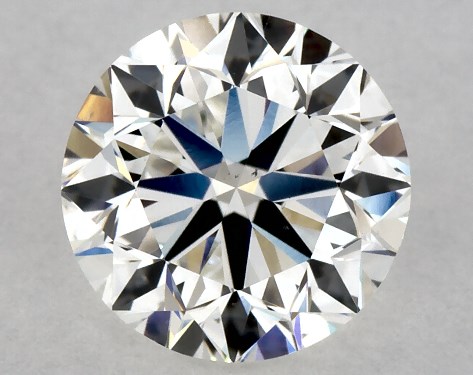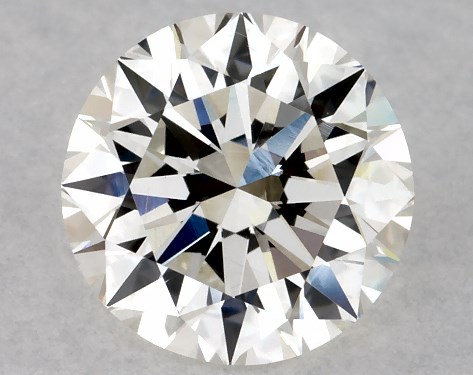Our Customer Service Center is currently closed for New Year’s and will reopen at 12am EST on Friday, January 2nd. Happy New Year!
1
2
3
Very Slightly Included Diamonds
VS1 and VS2 are two of the clarity grades within the very slightly included category. These diamonds will have very minor characteristics that are difficult (VS1) or somewhat easy (VS2) to see at 10x magnification. Very slightly included diamonds are Blue Nile's most popular choice, accounting for 43% of diamond sales. Shop our full selection of very slightly included diamonds at Blue Nile to experience the beauty for yourself.
Natural
Lab-Grown
Shape
Price
Carat
Color
Clarity
Cut
Fast Shipping
5,133 of 174,734 Results
Shipping Date By:
Sort By:
FAQs about Very Slightly Included Diamonds
Which clarity grade is the best value?
The VS and SI grades are some of the most popular and they’re often considered to be the best value.
How does the price of VS1 diamonds compare to the price of VS2 diamonds?
With all other factors being equal, a VS1 diamond would typically be more expensive than a VS2 diamond. However, many factors go into determining the price of a diamond, including clarity, cut, and carat weight.
What does "eye clean" mean?
If a diamond is "eye clean," it means that the inclusions are too small to see without magnification. For VS1 and VS2 diamonds, this means that in many cases, the inclusions won’t be seen in normal everyday settings.
Is clarity more important with certain diamond shapes?
Yes. Some shapes show inclusions more readily than others, such as emerald or Asscher cut diamonds. Clarity is also more important in diamonds that exceed one-carat weight. For these cuts, a clarity of VS1 or better is recommended.
Does clarity affect the price of the diamond?
Yes. Carat, cut, clarity, and color all affect the diamond price, but carat affects it the most.
How is diamond clarity measured?
Our diamonds are accompanied by ratings from trusted institutions such as the GIA. A diamond’s clarity grade is set by GIA experts after a careful review of the gemstone under 10x magnification. Its inclusions, such as clouds, feathers, scratches or dark spots are reviewed and quantified into the diamond clarity rating. Diamonds with larger, more noticeable or more plentiful inclusions may receive lower clarity ratings than more flawless diamonds.
Very slightly included diamonds (VS1 or VS2) are a popular clarity rating choice.
What is the difference between VS1 vs. VS2 diamonds?
Diamonds rated VS1 and VS2 are both considered very slightly included diamonds. A VS1 diamond will typically have inclusions that are smaller and less noticeable than those in a VS2 diamond. When considering VS1 vs. VS2 diamonds in terms of price, a VS2 diamond of similar remaining qualities among the 4Cs will have a lower price than its equivalent VS1 diamond.
Is a VS2 diamond a good choice?
A VS2 diamond can be a great choice for many jewelry styles. Consider the individual diamond’s other ratings including its cut, color and carat.
Is a VS1 diamond worth it?
A VS1 diamond can be a great option for engagement rings or other jewelry styles. Review the individual diamond’s additional ratings among the 4Cs to see how its other qualities work alongside its clarity.
What can impact a diamond’s clarity rating?
Diamond clarity focuses on a gemstone’s inclusions. The more noticeable a diamond's inclusions, the lower its clarity rating will be. Inclusions such as dark spots, light spots, feathering, graining, knots or cavities can all impact a diamond’s clarity rating. Very slightly included diamonds have some inclusions which are mostly observable at 10x magnification and generally not noticeable to an unaided eye.
Of course, no two diamonds are exactly alike, so be sure to review a gemstone’s GIA report to learn more about its unique inclusions.
Is VS1 clarity a good grade?
VS1 is considered a very slightly included clarity grade with inclusions that are typically difficult to see without 10x magnification. If you are searching for a diamond that is priced lower than more flawless grades without easily viewable inclusions, VS1 is a good option.
Can you consider VS2 diamonds a good clarity grade?
Many VS2 diamonds are still considered “eye clean” and can offer great value. In a VS2 diamond, inclusions can be somewhat easy to see at 10x magnification but may be more difficult to see with the unaided eye. VS2 diamonds are a popular choice for many jewelry styles.
ADD PRODUCTS IDS in the next inputs (max 5 , min 0):
























